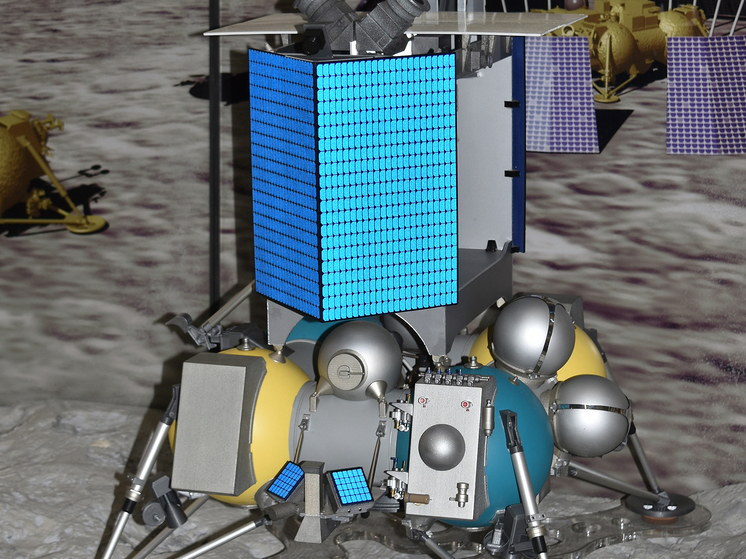The work of the state commission to determine the causes of the accident in space is close to completion
The hard landing of Luna-25, apparently, was to blame for the well-known Russian who crept onto this times per software. The work of the state commission to investigate the causes of failure with our interplanetary station is coming to an end. «MK» became aware of some of its details.

Let me remind you that the soft landing of Luna-25, planned for August 21, did not happen — instead the device landed hard, or simply crashed on the Moon two days earlier — on August 19. He now rests in the crater Ponteculan G in the southern hemisphere of the earth's satellite.
According to the head of Roscosmos, Yuri Borisov, who gave an interview to journalists a few days after the accident, the abnormal “landing” occurred due to the fact that Luna-25 did not brake in time when forming its pre-landing elliptical orbit — the engine, which was given an impulse to decrease, continued to work more than the allotted time. As a result, instead of switching from a circular orbit to an elliptical one with a periselation (lunar perigee) of 18 kilometers and an aposelation of 100 km, Luna-25 switched to the so-called “open descent orbit” and simply fell to the Moon.
< p>Next came the investigation into the reasons for the abnormal operating time of the engine, which did not “want” to turn off in time. A number of specialists considered one of the main problems to be the incorrect operation of the inertial unit “BIUS-L” (Unit for measuring angular velocities) developed by specialists from the Scientific and Production Center of Automation and Instrumentation named after. Pilyugin. It was the “BIUS-L” block that, according to the program, was supposed to provide information from its accelerometers about braking to the On-Board Digital Computer (ONBC), which controlled the operation of the engine. According to RIA-Novosti, “BIUS-L” was made in a short time instead of imported ones, using 100 percent Russian components, moreover, the system was not tested in space, which could have been the cause of the accident.
Now, after a more thorough “debriefing” of the flight, a different picture is revealed to specialists: most likely, the Pilyuginites did everything correctly — their BIUS-L was in working order. According to the protocol, when Luna-25 approached the earth’s satellite, their system was waiting for a command from programmers to turn on the accelerometers. The programmers issued this command (this was visible from the cyclogram), that is, in fact, they also did everything correctly, except for one thing… Their software did not analyze the response of BIUS-L, in fact, it simply did not make sure that the unit for measuring angular velocities has been put into operation.
“Everyone who is involved in writing software understands that when issuing a command, it is necessary to check whether it passed or not,” one of the industry employees comments on the situation. – This rule is like the “Our Father” for programmers, because anything can interfere with the passage: a digital signal error, random interference slipped through… You could duplicate the command right there, and everything, most likely, would work as it should.
In general, according to the information available today, the picture looks like this: “BIUS-L”, without receiving a command, did not enter the correct mode, did not transmit the correct information to the onboard computer, and it did not transmit a signal to the engine to turn off in a timely manner . The final result of the state commission's work is expected at the end of September.


